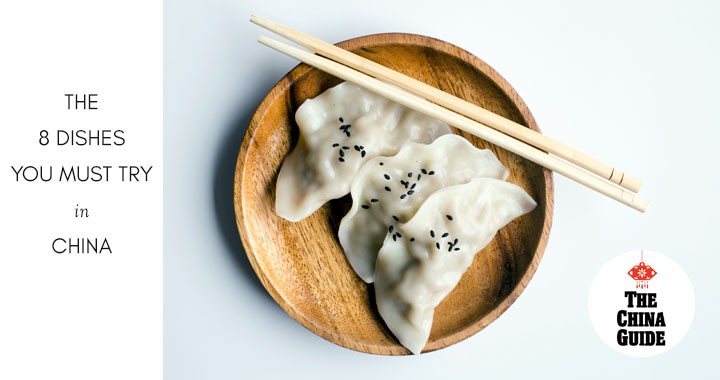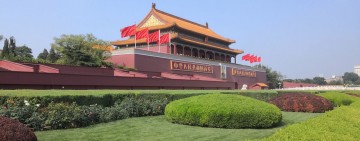The Eight Dishes You Must Try in China
Last updated on 2019-04-20
Chinese cuisine is among the most diverse, complex cuisines in the world, so much so that it is hardly possible to describe any one style of cooking as “Chinese cuisine.” Classical Chinese cooking is often split into the “Eight Great Cuisines” of Anhui, Cantonese, Fujian, Hunan, Jiangsu, Shandong, Sichuan, and Zhejiang, but many other regional and ethnic cuisines exist in-between.
What this all means is that a wealth of fabulous food awaits travelers to China. We have rounded up a few of our favorite dishes below - no trip would be complete without trying at least a few of these!
Peking duck

If you only have time for one meal in Beijing, make it Peking duck. The dish as we know it today first came into being in the Ming dynasty, and the first Peking duck restaurant, Bianyifang, opened in 1416 – and is still in business today! To make the dish, ducks, bred specially for the dish and slaughtered after 65 days, are usually roasted over fruitwood until the skin is crisp and the flesh is juicy, before being sliced and served with pancakes, sweet bean paste sauce, cucumber, and scallions. You can, of course, sample Peking duck in many cities across China, but for the best experience, you must eat it in its namesake city. Popular options for Peking duck in Beijing include hyper-modern Da Dong, local joint Siji Minfu, and Hua’s Restaurant, set in a restored hutong courtyard.
Kungpao chicken

You may think you’ve had kungpao chicken back home, but you’ll be blown away when you try the real deal in China. Instead of the gloopy sauce and cashews that often mar versions of the dish in the west, true kungpao chicken (better known by its Chinese name gongbao jiding) features chunks of chicken, peanuts, and leeks in a moreish spicy-sweet sauce. The dish is thought to be named after Qing dynasty official Ding Baozhen, who was governor of Sichuan province. His title was gongbao, or “protector of the palace,” from which the dish’s name is taken.
Sweet and sour mandarin fish
Hailing from Jiangsu province, this dish is a real showstopper! You may also see this dish translated on menus as “squirrel fish,” but don’t let that put you off – it doesn’t actually contain squirrel! The flesh of the fish is scored in a crisscross pattern so that when it is cooked (usually deep-fried) it opens out like a bushy squirrel tail. The deep-fried fish is then drizzled with a sweet and sour sauce and garnished with diced vegetables.
Chuan’r
Originating in Xinjiang, chuan’r is usually used to refer to lamb kebabs spiced with cumin and chili, although technically it just translates as “kebab.” Lamb (and associated lamb offal) is most common, but you can also find chicken wings, vegetables, and even naan bread grilled with the same spicing. The kebabs are part of the Chinese Islamic cuisine of the Uyghur people and are popular not only in Xinjiang, but across north China.
Xiaolongbao

Our guests often tell us that these steamy, soupy dumplings are the culinary highlight of their trip to China. A specialty of the Shanghai region, xiaolongbao are usually filled with pork or sometimes crab roe. The soupy filling is made by placing a small cube of jellified pork stock inside the dumpling before it is sealing, which then melts in the heat of the steamer. You will likely find the xiaolongbao served alongside a dish of fragrant black vinegar with ginger slivers for dipping, which is used to cut through the richness.
Biangbiang noodles
A popular – if not the most popular – noodle dish hailing from Shaanxi province, this noodle dish is also famous for using one of the most complex Chinese characters in existence, biáng. Said to represent the onomatopoeic sound of noodle dough being slapped on a table, the character is so obscure that it isn’t included in most modern dictionaries. Made with wheat flour, the thick, belt-like noodles are topped with chili oil and braised pork.
Hot pot

No trip to Chongqing would be complete without trying the city’s famous spicy hot pot. In contrast to other types of Chinese hot pot, where the ingredients are more important than the broth, here the broth is king, flavored with chilies, dried spices like star anise, and lots of mouth-numbing Sichuan peppercorns. Diners can up the spice level even further by dipping the cooked meat or vegetables in a small plate of dried spices, usually including chili and cumin.
Red-cooked pork
A type of long, slow braising, red cooking takes its name from the deep red-brown color imparted by dark soy sauce and caramelized sugar during the cooking process. By far the most common version of the dish is red-cooked pork. It is said that red cooked pork with Chairman Mao’s favorite dish (he even brought his favorite chefs with him when he left Hunan for Beijing to make sure he wouldn’t have to suffer through inferior versions). ■




